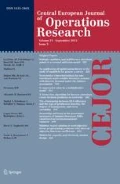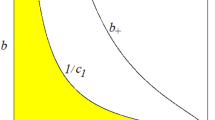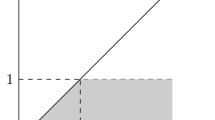Abstract
We investigate important macroeconomic and macroeconometric feedback channels in models that concern the dynamic interaction of the labor market, product market and the monetary and financial sector. The core of our study is an applied disequilibrium model of monetary growth of a small open economy. After surveying the feedback channels we consider a compact description of the intensive form of the model. We consider various types of subsystems, the integration of which is subsequently compared from the perspective of bifurcation diagrams that separate cases of asymptotic stability from stable cyclical behavior as well as pure explosiveness. In this way we lay out a research strategy, which will show, in contrast to what is generally believed, that applied integrated macrodynamic systems can have a variety of interesting attractors and transient dynamics, which are obtained in particular when locally explosive situations are turned into bounded dynamics by the addition of specifically tailored extrinsic nonlinearities.
Similar content being viewed by others
References
Asada T, Chiarella C, Flaschel P, Franke R (2003) Open economy macrodynamics. An integrated disequilibrium approach. Springer, Berlin Heidelberg New York
Barnett WA, He Y (1999) Stability analysis of continuous-time macroeconometric systems. Stud Nonlin Dyn Econom 3:169–188
Barnett W, Gandolfo G, Hillinger C (1996) Dynamic disequilibrium modeling: theory and applications. Cambridge University Press, Cambridge
Bergstrom AR, Nowman KB, Wandasiewicz S (1994) Monetary and fiscal policy in a second-order continuous time macroeconometric model of the United Kingdom. J Econ Dyn Control 18:731–761
Bodkin R, Klein L, Marwah K (1991) A history of macroeconometric model-building. Edward Elgar, Aldershot
Chen P, Chiarella C, Flaschel P, Semmler W (2006) The feedback channels of macro-economic dynamics; a disequilibrium model of monetary growth. UTS Sydney, working paper
Chiarella C, Flaschel P (1999) Towards applied disequilibrium growth theory: II. Intensive form and steady state analysis of the model. UTS Sydney, working paper
Chiarella C, Flaschel P (2000) The dynamics of Keynesian monetary growth: macrofoundations. Cambridge University Press, Cambridge
Chiarella C, Flaschel P, Groh G, Semmler W (2000) Disequilibrium, growth and labor market dynamics. Macro perspectives. Springer, Berlin Heidelberg New York
Chiarella C, Flaschel P, Franke R (2005) Foundations for a disequilibrium theory of the business cycle: qualitative analysis and quantitative assessment. Cambridge University Press, Cambridge
Franke R, Semmler W (2000) Bond rate, loan rate and Tobin’s q in a temporary equilibrium model of the financial sector. Metroeconomica 50:351–385
Goodwin RM (1967) A growth cycle. In: Feinstein CH (eds). Socialism, capitalism and economic growth. Cambridge University Press, Cambridge, pp 54–58
Hoogenveen V, Kuipers S (2000) The long-run effects of low inflation rates. Banca Nazionale del Lavoro Q Rev 214:267–285
McKibbin W, Sachs J (1991) Global linkages. Macroeconomic interdependence and cooperation in the world economy. The Brookings Institution, Washington
Metzler LA (1941) The nature and stability of inventory cycles. Rev Econ Stat 23:113–129
Powell A, Murphy C (1997) Inside a modern macroeconometric model. A guide to the Murphy model. Springer, Berlin Heidelberg New York
Rose H (1967) On the non-linear theory of the employment cycle. Rev Econ Stud 34:153–173
Author information
Authors and Affiliations
Corresponding author
Rights and permissions
About this article
Cite this article
Chen, P., Chiarella, C., Flaschel, P. et al. The feedback channels in macroeconomics: analytical foundations for structural econometric model building. 14, 261–288 (2006). https://doi.org/10.1007/s10100-006-0004-9
Published:
Issue Date:
DOI: https://doi.org/10.1007/s10100-006-0004-9




